Collection of Posters from China’s Cultural Revolution
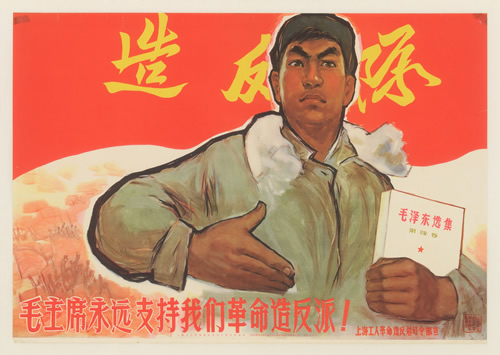
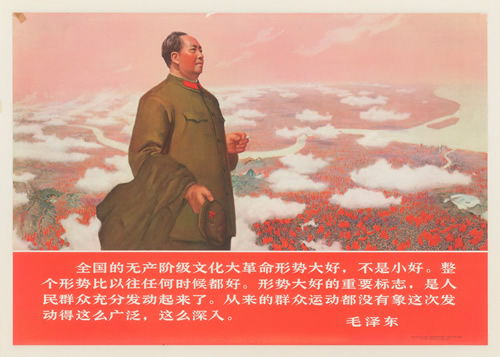
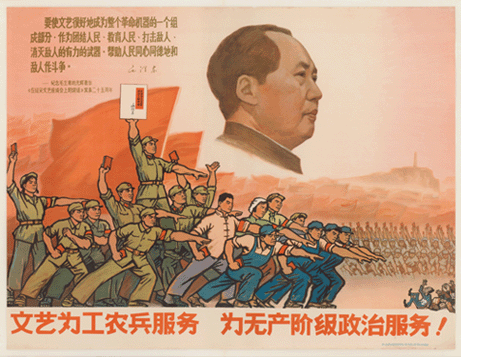
Much artwork (music, art, dances, films, etc.,) was brought to bear in the United States, the Soviet Union, and China during the Cold War era from the 1950s to the 1970s as political advertisements for the masses. In Asia, and in China in particular, many political posters that aimed to praise the Chinese Communist Party and Mao Zedong were created to counter American imperialism as the country experienced turmoil during the Great Proletarian Cultural Revolution around 1966 to 1976. These posters were actually used in places of daily life and work. Currently, it is known that the University of Amsterdam and Leiden University in the Netherlands own approximately 2,800 Chinese propaganda posters and the Shanghai Propaganda Poster Art Center owns about 6,000 Chinese propaganda posters related to the Cultural Revolution. We were donated around 200 posters from the Cultural Revolution from Sinologist Niijima Atsuyoshi. Although this number is not large or on the same level as collections in other countries, the posters are invaluable, as Mr. Niijima collected each poster himself while walking through the streets of Beijing during the Cultural Revolution. It is certain that the collection will spur the Research Center for Nonwritten Cultural Materials that aims to study iconography to collect and study materials on Chinese iconography henceforth.
Collection of Kondo Tsunehiro and Kondo Hisayoshi’s Materials Related to Tianjin
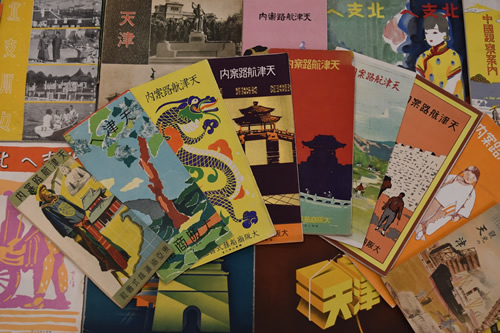


Kondo Tsunehiro was born in Tianjin in 1929. He attended kindergarten and elementary school there, and when he was a fourth-year middle-school student at a Japanese school in Tianjin, the Pacific War ended. The following year, in 1946, he returned to Japan and began holding an annual reunion for his middle school classmates. In 2002, he was appointed the organizer and a reunion in Tianjin was planned. Mr. Kondo decided to create a guidebook for the event and began collecting materials on Tianjin. That was how his collection began. In the 12 years since then, the collection grew, and the collection of picture postcards with illustrations alone numbered more than 1,000. The materials donated include maps in Japanese and Chinese, collections of photographs, postcards with illustrations, personal photographs, guidebooks, train tickets, and relevant publications. (We also received a donation of materials related to Tianjin from Mr. Kondo’s younger brother Hisayoshi) The Kondo collection is a comprehensive collection of materials collected by the brothers who grew up in Tianjin. The research team at the Center is currently studying the materials from various angles, and we expect great outcomes from these studies.
Collection of Wartime Propaganda Kamishibai
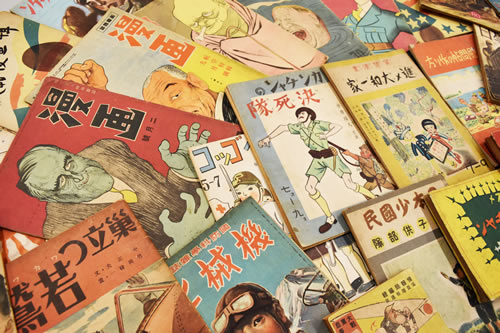

Kamishibai (picture-story shows) are considered to be the basis for traditional Japanese audio-visual culture in which the audience listens to a story while looking at something. Examples include picture scrolls, nozoki karakuri (shows using a device with a lens mounted on a stand or in a box to view enlarged pictures), projected pictures, and live narration of silent films. These traditions gradually disappeared from the streets with the spread of television in households from the mid-1950s onward, but during their peak in the years before and after the Second World War, the performances were said to attract a million viewers (children) per day in Tokyo alone. However, kamishibai, a mass medium that had a high cultural value on a level with that of newspapers, radio and films, without exception played a part in war propaganda under the regulation of free speech during the Imperial Rule Assistance era when Japan rushed into the Fifteen Year War. The series of picture-story shows produced during this time were called “kokusaku kamishibai” (national policy picture-story shows), but many were burned or scattered and lost in the period between the Japanese defeat and the occupation. The “Collection of Wartime Propaganda Kamishibai” assembled by the Research Center for Nonwritten Cultural Materials comprises 241 pieces, mainly items published between 1938 and 1941 by Nippon Kyoiku Gageki (Japan Educational Theatre) (the kamishibai publishing body of the Nippon Kyoiku Kamishibai Kyokai (Japan Educational Kamishibai Association) formed in 1938). The former owner of the collection is Tomio Sakuramoto, author of Senso to Kamishibai (Kamishibai and the War) among other works, who has consistently uncovered materials related to trends among various media and groups during wartime and the responsibility of cultural figures for the war.
Collection of Photographs of Shanghai Taken by Kawai Yasuhei


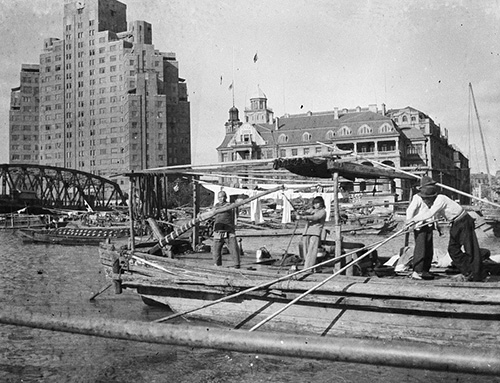
In 2022, the International Settlements and Foreign Concessions research group of the center was donated the Collection of Photographs of Shanghai Taken by Kawai Yasuhei (consisting of approximately 1,200 photographs) that was owned by Kawai Yasuo. Kawai Yasuhei was born in 1912 and began his military service at Sasebo Naval District from August 1940. Soon after, he was assigned to the construction unit of the China Area Fleet. For the roughly four and a half years until March 1945, he spent his time in Shanghai as a civilian in military employ (construction technician). After the war ended, it is said that he worked at Yasui Architects & Engineers, Inc. until his retirement and that he passed away on June 20, 2001. The donation includes two albums (one album contains photographs shot with a Rokuoh-sha Baby Pearl camera, Hexar f/4.5 lens, 127 roll film 3x4cm (half-frame vest size), film negatives numbered #1 to 660; the other album contains photographs shot with a Baldax camera, Tessar f/3.5, 120 roll film 4.5x6cm (half-frame Brownie size), film negatives numbered #1 to 676). The Collection contains photographs of the streets of Shanghai from 1940 to 1945; it also contains information such as the place, time, and date each photograph was taken as well as the weather and f-number. Because of this, it is an invaluable collection of materials in which we can see information on how the photographs were taken.
Takagi Mikio Laboratory Slide Films
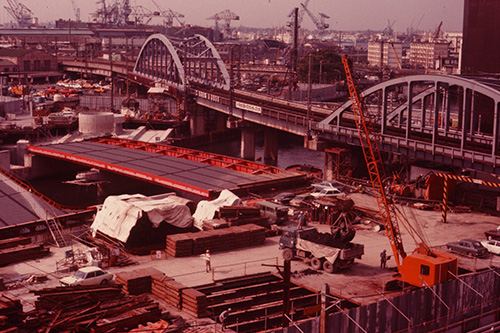
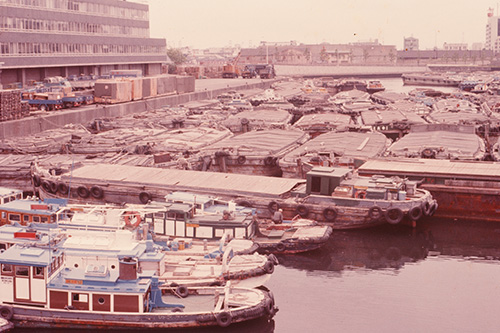
In the lecture series "Yokohama's Canals - Rivers in the City-" held for several years in the 1970s by Takagi Mikio Laboratory, Faculty of Engineering, Kanagawa University, literature research, fixed-point observations, and interviews were conducted on the formation and historical changes of rivers and canals. The " Takagi Mikio Laboratory Slide Films" were taken during these fixed-point observations. Houses, shops, bridges, and various old and new buildings along rivers and canals are shown, revealing that the “landscape with canals” was transforming amidst the rapid development of the transportation network in Yokohama at the time. The slide films have been digitized and are being utilized in the center's research.
